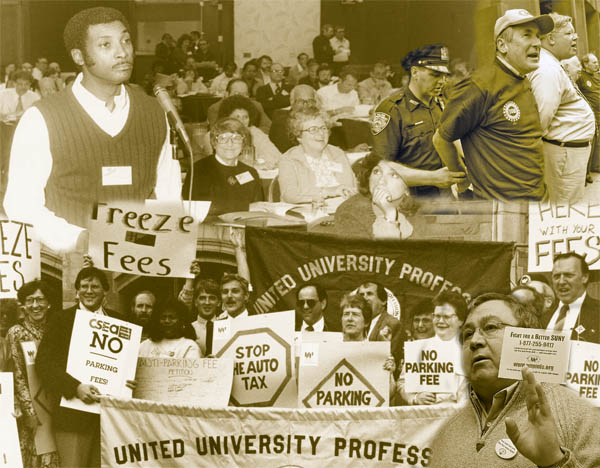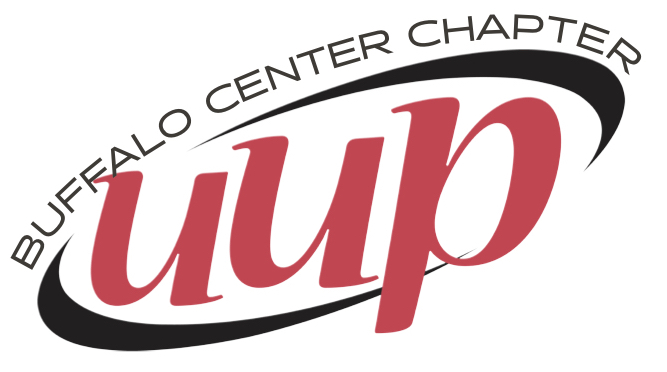
From its outset in 1973, UUP became a one-of-a-kind statewide organization comprised of a wide spectrum of educational institutions — thus amassing a diverse group of academic faculty and professional employees. UUP is the nation’s largest higher education union, representing the faculty and professional staff of the 32 University centers, statutory college, comprehensive and technical colleges across the SUNY system. Our members range from Nobel Prize winners, National Book Award winners, trout farmers, information technologists, librarians, and almost everything in between.
Geographically, SUNY’s institutions are scattered throughout the state reaching as far north as Plattsburgh near the Canadian Board (SUNY Plattsburg), east on Long Island (SUNY Stony Brook), South in southern New York City (Brooklyn Health Science Center), and west to the Pennsylvania border (SUNY Fredonia). With this contrasting geography, some significant differences exist in the costs of living for members. This further complicates UUP’s ability to serve its members effectively to address geographical differences in living costs.
As a statewide union, UUP has to negotiate a single contract acceptable to its extraordinarily diverse professional membership.
The decision to establish UUP as a statewide bargaining unit in 1973 made it the largest higher-education union in the country, but it also presented an array of political problems in the state. New York’s private institutions of higher learning had dominated the state’s higher-education community throughout the state’s history. Historically the privates used their political influence to maintain and protect the funding provided to them by the state legislature. As such, SUNY was under-funded and under-enrolled. The breadth and depth of their academic programs was not developed, and most of the faculty lacked doctoral degrees. It simply was designed to play a secondary role to the privates.
This all changed between 1959 and 1973, when Nelson Rockefellers’ vision was to build a first-rate public university. During this time SUNY expanded significantly, as legislators poured hundreds of millions of dollars into the system. Rockefeller directed SUNY’s leadership to acquire or construct new campus in anticipation of growing enrollments of the baby boomers. Campuses were modernized and expanded, faculty with doctorates were hired, and salaries were raised to be competitive with the privates and other institutions. Teaching remained a top priority, but research and publishing assumed a larger role in the university’s culture.
With new faculty, came more growing pains. The new faculty wanted a greater say in the administrations of their campuses and of SUNY. They rejected the top-down, non-collegial management style that was prevalent across SUNY campuses. Instead, they fought for a relationship with the administration such as found and enjoyed by other many other faculties at established colleges and universities throughout the nation. They sought a culture of collegiality and a community of scholars. As long as the money poured in, these issues were held below the surface, but when the faucet was turned down…the problem returned.
With the need to negotiate and enforce the provisions set within the contract, came the need to hire trained experts. UUP then became affiliated with the large and powerful New York State United Teachers (NYSUT), which provided the highly trained staff necessary to fulfill these functions. As NYSUT employees, these field staff remained independent of the union’s internal politics; they were legal technicians. Affiliation with NYSUT also entailed an association with the giant national teachers union, the American Federation of Teachers (AFT. These affiliations gave UUP much material support and booted its prestige with SUNY managers and within the labor movement.
UUP gradually became a major player in New York Politics with the backing of NYSUT. As it grew and matured, its political clout became at least as important as what it achieved at the bargaining table to protect and better its members’ interests. The union has become 35,000 strong and continues to fight for its members contractual right, but also has fought beyond the contract to protect the culture of academic freedom, shared governance, and academic tenure. Nothing is taken for granted for what it has achieved and it continues to battle to protect and enhance member interests and the interests of the University.
Source: Drescher, Scheuerman, and Steen (2019). United University Professions: Pioneering in Higher Education Unionism. SUNY Press, Albany.
